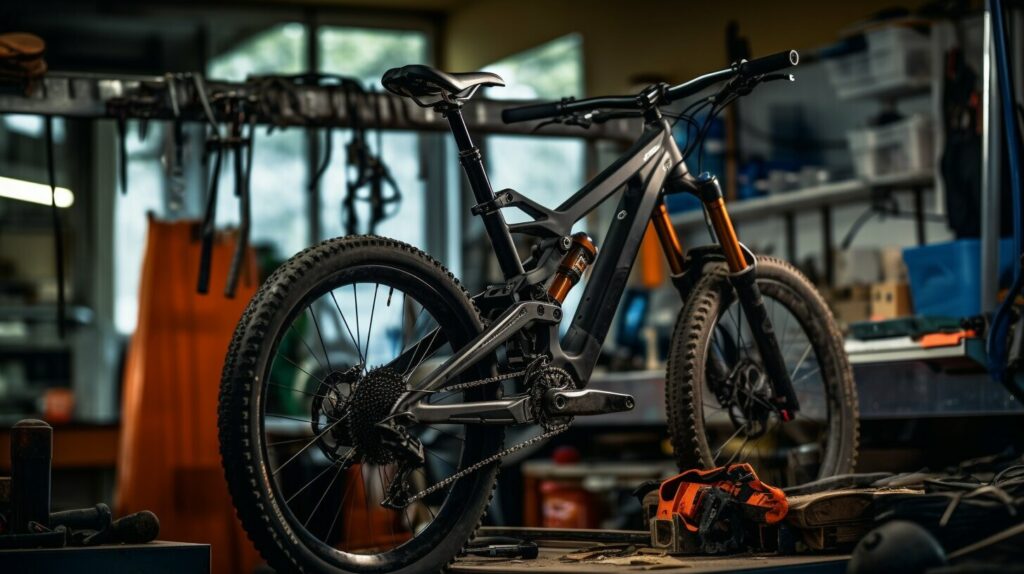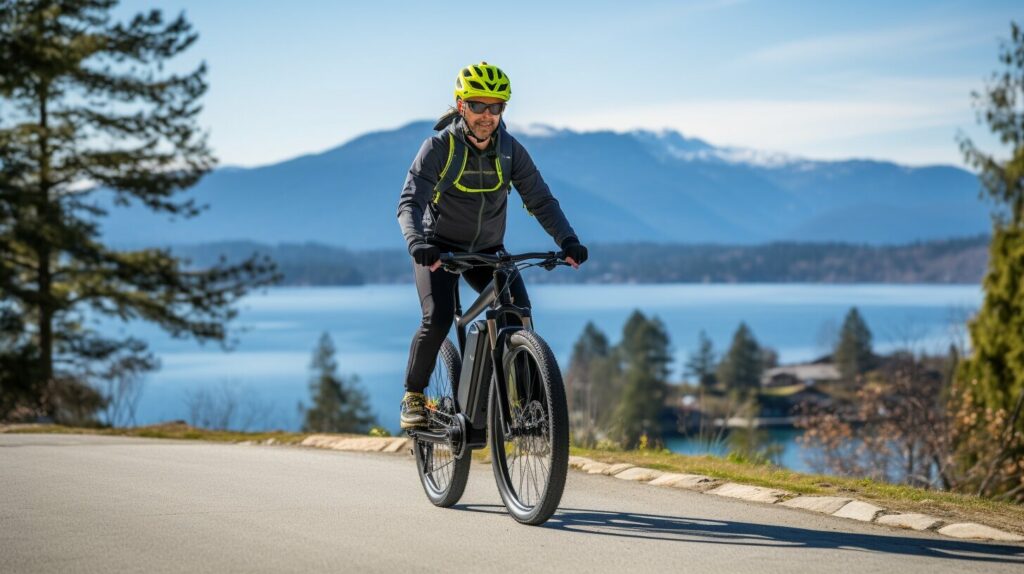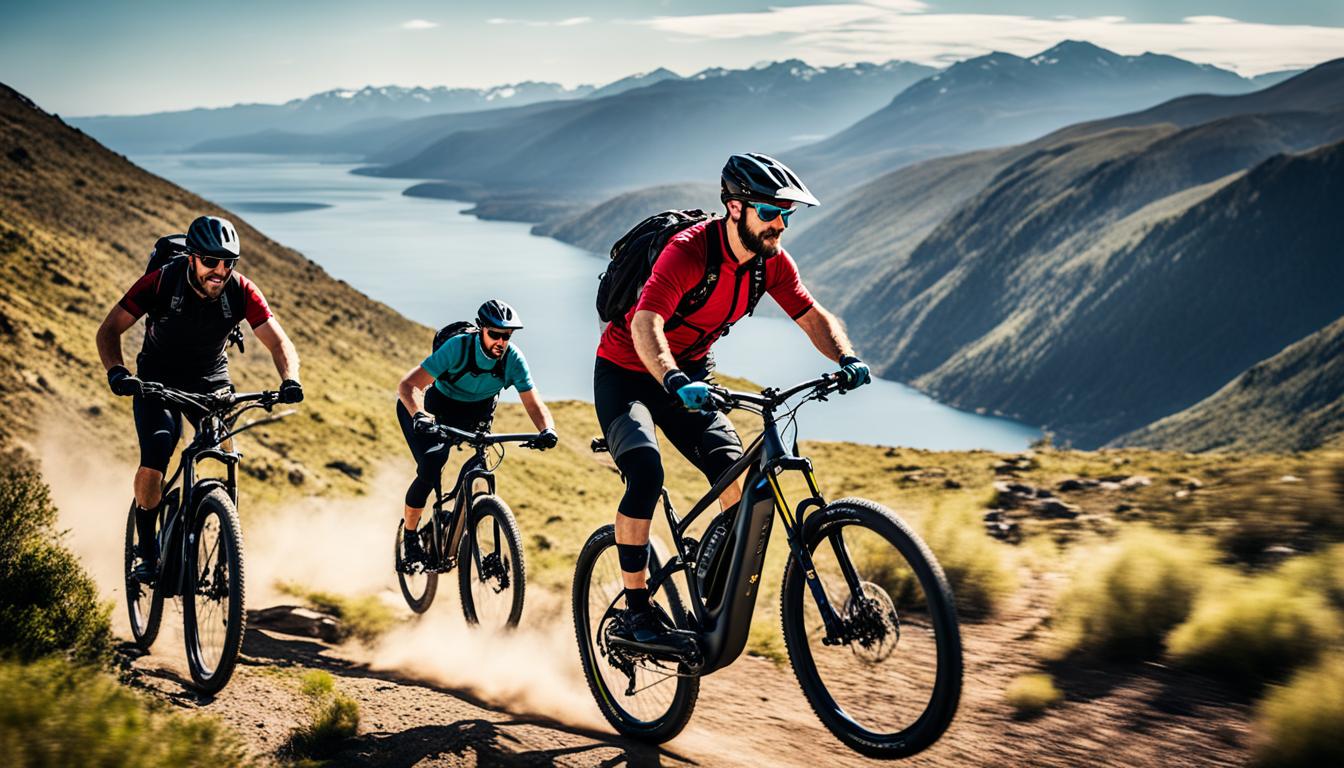Are you a beginner looking to venture into the world of electric biking? Look no further! In this comprehensive guide, we’ll provide you with everything you need to know to become a confident electric biker. From understanding the basics of electric bikes to choosing the right one and mastering the techniques, we’ve got your back. So, let’s get started on this electrifying journey!
Key Takeaways
Disclosure: When you buy through links on our site, we may earn an affiliate commission.
- Electric biking is a convenient and eco-friendly mode of transportation that’s becoming increasingly popular.
- Before starting your electric biking journey, it’s important to understand the key components and features of electric bikes.
- Choosing the right electric bike for your needs is crucial to ensure a safe and enjoyable ride.
- Mastering the fundamental techniques and safety measures is essential for a confident electric biking experience.
- Proper maintenance and the right accessories can enhance your electric biking experience and ensure your bike performs at its best.
Understanding Electric Bikes
Electric bikes, also known as e-bikes, are bicycles that are equipped with an electric motor to assist with pedal power. They are designed to make cycling easier and more accessible, while also providing a sustainable and eco-friendly mode of transportation.

There are several types of electric bikes to choose from, including:
- City e-bikes – ideal for commuting and casual riding in urban areas
- Mountain e-bikes – designed for off-road terrain and more challenging cycling
- Folding e-bikes – lightweight and compact for easy storage and transportation
When choosing an electric bike, there are several factors to consider:
- Budget – electric bikes can range in price from a few hundred dollars to several thousand dollars
- Motor power – determines how much assistance you will receive while pedaling
- Battery life – the range of your e-bike will depend on the strength and capacity of the battery
- Weight and size – factor in the weight and size of the bike, especially if you plan to store it in a small space
Understanding these key components will help you select the right electric bike for your needs. Keep in mind that electric bikes are heavier than traditional bikes due to the battery and motor, so make sure you feel comfortable handling the weight before making your final decision.

Choosing the Right Electric Bike
When it comes to choosing the right electric bike for beginners, there are several factors to consider. It’s important to determine your primary use for the electric bike, whether it be for commuting, leisurely rides, or off-road adventures.
Range: Consider the range of the bike, which refers to the distance it can travel on a single charge. For beginners, a range of 20-30 miles should be sufficient for most rides.
Motor power: The motor power will determine the speed and ease of your ride. For beginners, a motor power of 250-500 watts is recommended for a comfortable and efficient experience.
Battery life: The battery life is crucial for the longevity of your bike. Look for a battery with a capacity of at least 10AH to ensure a longer lifespan.
Comfort: Comfort is a key factor when choosing an electric bike. Ensure that the bike has a comfortable saddle and adjustable handlebars to suit your riding style.
Price: Finally, consider the price. Electric bikes can range from a few hundred dollars to several thousand dollars. As a beginner, it’s recommended to start with a mid-range bike to determine your preferences before investing in a high-end model.

By taking these factors into account, you can choose the perfect beginner-friendly electric bike for your needs.
Electric Bike Safety Tips
Electric biking can be a fun and convenient way to get around, but it’s important to prioritize safety. Here are some essential safety tips to keep in mind as a beginner:
- Wear a helmet: Protect your head by wearing a well-fitting helmet every time you ride your electric bike.
- Obey traffic laws: Electric bikes are subject to the same rules of the road as traditional bicycles. Follow traffic signals, use hand signals to indicate turns, and ride in the same direction as traffic.
- Stay visible: Wear bright or reflective clothing and use lights on your bike to make sure you’re visible to other drivers.
- Be aware of potential hazards: Keep an eye out for obstacles like potholes, gravel, and uneven terrain.
- Use caution when turning: Slow down and check for oncoming traffic before making a turn. Use hand signals to indicate your intentions.
By following these safety tips, you can minimize your risk of accidents and enjoy your electric biking experience to the fullest.

Mastering the Basics
Electric biking is similar to traditional biking, but with a helpful boost from the motor. To get started, you’ll need to know the basics of how to ride an electric bike.
Before you begin, ensure you have all necessary safety gear, such as a helmet and comfortable, sturdy shoes. Adjust your saddle height so that your feet can comfortably touch the ground while you’re seated. Familiarize yourself with the controls on your electric bike, such as the power assist level and the brakes.
When you’re ready to ride, start by pedaling as you would on a traditional bike. Gradually increase your power assist level for a boost in speed and agility. Remember to maintain balance by keeping your body centered and your weight evenly distributed.
Stopping your electric bike is similar to stopping a traditional bike. Squeeze both brakes evenly to slow down, and come to a complete stop before dismounting.
When navigating turns or corners, lean your body gently in the direction you want to go. Be sure to look ahead and anticipate any obstacles or hazards on the road.

With practice, you’ll master the basics of electric biking and be able to confidently tackle more challenging routes and terrain.
Electric Bike Maintenance
Maintaining your electric bike is crucial for extending its lifespan and ensuring optimal performance. By taking care of your bike, you’ll also prevent potential safety hazards caused by worn-out or malfunctioning parts. Here’s what you need to know:
Cleaning and Lubricating the Chain
The chain is an essential component of your electric bike, responsible for turning the rear wheel and propelling you forward. It’s also exposed to dirt, debris, and moisture during rides, which can cause it to wear out and rust over time.
To clean your chain, use a chain cleaner or a soft brush and a degreaser to remove dirt and grease buildup. Let it dry completely before applying lubricant to the links, pins, and rollers. Avoid over-lubricating, as this can attract more dirt and cause the chain to slip.
Checking Tire Pressure
Proper tire pressure is crucial for ensuring a smooth and safe ride. Check your tire pressure regularly, using a gauge to ensure it matches the manufacturer’s recommended PSI (pounds per square inch). Underinflated tires can cause instability, poor handling, and increased rolling resistance, while overinflated tires can lead to a bumpy ride and decreased traction.
Battery Care
The battery is the heart of your electric bike, powering the motor and enabling you to ride longer distances. To prolong its lifespan and capacity, avoid exposing it to extreme temperatures, moisture, or impact. Store it in a cool, dry place and avoid leaving it plugged in for extended periods when not in use. If your bike has a removable battery, make sure to charge it fully before each ride and never let it fully deplete.

Regular Maintenance Checks
Regular maintenance checks can help you identify and address potential issues before they become major problems. Check your brakes, gears, and other components for wear, damage, or misalignment. Tighten loose bolts and replace worn-out parts as needed. If you’re not comfortable doing maintenance checks yourself, take your bike to a professional bike shop for a tune-up.
By following these maintenance tips, you can keep your electric bike in top condition and enjoy safe and comfortable rides.
Exploring Electric Biking Accessories
Enhance your electric biking experience with the right accessories. Whether you’re looking to improve your safety, storage options, or enjoy added comfort, there’s sure to be an accessory to meet your needs. Here are some essential electric biking accessories for beginners:
Helmet
Safety should always come first when riding your electric bike. A properly fitting helmet can help protect your head in the event of an accident. Look for a helmet that meets safety standards, such as those set by the Consumer Product Safety Commission (CPSC).

Visibility is key when riding your electric bike, especially at night or in low light conditions. Invest in a set of front and rear lights to make yourself more visible to other cyclists, pedestrians, and drivers on the road.
Basket or Panniers
Carrying your belongings while riding your electric bike can be a challenge. A front handlebar basket or rear panniers can provide ample storage options for groceries, work supplies, or other necessities.
Bike Lock
Protect your electric bike from theft with a reliable bike lock. Look for a lock that is both sturdy and easy to carry with you while riding.
Gloves
Electric bike handgrips can sometimes be hard and uncomfortable, especially on longer rides. A pair of breathable, padded gloves can offer increased comfort and grip on your handlebars.
- Invest in a quality helmet that meets safety standards
- Ensure visibility on the road with front and rear lights
- Carry your belongings with a basket or panniers
- Protect your electric bike from theft with a sturdy bike lock
- Enhance comfort and grip with breathable, padded gloves
By exploring these electric biking accessories, you can tailor your ride to meet your individual needs and preferences, making your electric biking experience both safer and more enjoyable.

Electric Biking for Fitness and Recreation
Electric biking isn’t just a convenient mode of transportation; it’s also a great way to improve your fitness level and enjoy recreational activities. Whether you’re looking to lose weight or build endurance, riding an electric bike can help you achieve your fitness goals at your own pace.
For beginners, it’s essential to start slow and gradually increase your activity level. Set realistic goals for yourself, such as completing a certain distance or riding for a specific amount of time. Remember to listen to your body and take breaks when needed.
In addition to fitness, electric biking offers an excellent opportunity for recreational activities. Explore new routes and take in scenic views that you may not have been able to experience on foot or in a car. Pack a picnic and enjoy a leisurely ride with friends or family. The possibilities are endless!
Don’t forget to stay safe and abide by traffic laws, especially when riding on roads and shared pathways. Wearing appropriate safety gear and staying visible with lights and reflectors is crucial.

Make the most of your electric bike by incorporating it into your fitness routine and exploring new recreational opportunities. Electric biking is a fun and accessible activity for people of all ages and fitness levels.
Troubleshooting Common Electric Bike Issues
As a beginner in electric biking, you may encounter some issues with your bike. Don’t worry; most of these issues are easy to resolve with minimal effort. Here are some of the most common electric bike problems and how to troubleshoot them:
The battery is not charging
- Check if the charger is properly connectedMake sure the power source is workingTry another outlet or charger if possible
The motor is not working
- Check if the battery is chargedInspect the motor and wiring for damageEnsure that all connections are secure
The brakes are not functioning
- Check the brake cables for damage or loosenessMake sure the brake pads are properly adjustedClean the brake pads if necessary
The tires are flat
- Inflate the tires to the recommended pressureInspect the tires for punctures or damageReplace the inner tube or tire if necessary
Remember, safety should always come first. If you experience an issue that you are not comfortable troubleshooting, consult a professional electric bike mechanic. With patience and persistence, you’ll become a pro at fixing common electric bike issues.

Conclusion
You’re now equipped with the fundamental knowledge to start your electrifying journey on two wheels. Armed with an understanding of e-bike basics and components, you can shop for the model best suited to your needs.
Follow the tips provided to ride safely, maintain your bike, and troubleshoot common issues. With practice, you’ll gain confidence and mastery to handle every twist and turn the open road offers. E-biking is more than a convenient mode of transport; it’s a passport to new adventures, connections with nature, and improved fitness.
Charge your battery and spirit, and let the hum of the motor pave the way to self-discovery. The open road awaits, so embrace the freedom of the ride. Your e-biking journey begins today!
FAQ
What is an electric bike?
An electric bike, also known as an e-bike, is a bicycle that is equipped with an electric motor to provide assistance while pedaling. It allows riders to travel longer distances and tackle hilly terrains with less effort.
How fast can an electric bike go?
The maximum speed of an electric bike can vary depending on various factors, including the motor power and local regulations. In general, most electric bikes have a top speed of around 20 to 28 miles per hour.
Do I need a license to ride an electric bike?
In most cases, you do not need a license to ride an electric bike. However, it’s important to familiarize yourself with the local regulations and requirements, as they can vary depending on your location.
How far can I travel on a single charge?
The range of an electric bike depends on factors such as the battery capacity, level of pedal assistance, terrain, and rider weight. On average, most electric bikes can travel between 20 to 50 miles on a single charge.
Can I still pedal an electric bike?
Yes, electric bikes are designed to be pedaled just like traditional bicycles. The electric motor provides assistance while pedaling, but you can also choose to ride without motor assistance if desired.
How do I charge the battery of an electric bike?
Charging the battery of an electric bike is similar to charging any other electronic device. Most electric bikes come with a charger that can be plugged into a standard electrical outlet. Simply connect the charger to the battery and wait for it to fully charge.
Are electric bikes suitable for all age groups?
Electric bikes can be enjoyed by riders of various age groups, but it’s important to consider individual physical capabilities and local regulations. It’s always recommended to consult with a healthcare professional if you have any concerns.
Can I ride an electric bike in the rain?
While electric bikes are designed to withstand some moisture, it’s advisable to avoid riding in heavy rain or extreme weather conditions. Wet surfaces can affect traction and braking, potentially compromising safety.
Are electric bikes expensive to maintain?
Electric bikes generally have lower maintenance costs compared to motorized vehicles. Routine maintenance includes checking tire pressure, keeping the bike clean, and ensuring the battery is properly charged. However, it’s recommended to have periodic inspections by a professional to ensure optimal performance.
Can I ride an electric bike on bike paths or trails?
The rules regarding electric bike usage on bike paths or trails can vary depending on local regulations. It’s important to familiarize yourself with the specific rules in your area to ensure compliance and safety.




